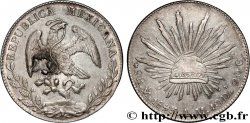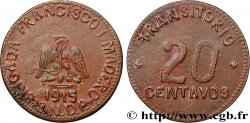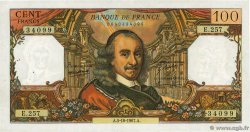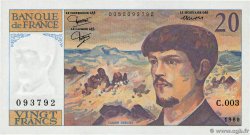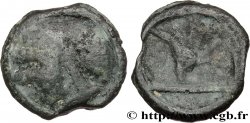fwo_550137 - MEXICO 20 Pesos “Pierre du Soleil” (calendrier aztèque) 1921 Mexico
недоступный.
Товар уже продан в нашем интернет-магазине (2019)
Цена: : 800.00 €
Товар уже продан в нашем интернет-магазине (2019)
Цена: : 800.00 €
Тип 20 Pesos “Pierre du Soleil” (calendrier aztèque)
Дата: 1921
Монетный двор / Город: Mexico
Количество отчеканенных монет: 922000
Металл: gold
Проба: 900 ‰
Диаметр: 27,2 mm
Ориентация осей монеты: 6 h.
Вес: 16,68 g.
Век: inscrite en creux
Редкость: R1
Ссылки в каталоге: :
Лицевая сторона
Аверс: легенда: ESTADOS UNIDOS MEXICANOS / 1921.
Аверс: описание: Aigle debout à gauche sur un cactus, lui-même poussant sur une pierre, et terrassant un serpent au-dessus d’un lac bordé par deux branches composites ; dans le champ le millésime.
Аверс: перевод: (États-Unis du Mexique).
Обратная сторона
Реверс: легенда: VEINTE PESOS/ *15 GR. ORO PURO*.
Реверс: Описание: Pierre du soleil ou “Calendrier aztèque”.
Реверс: перевод: (Vingt pesos/ 15 grammes d'or pur).
Комментарий
Cet exemplaire est la frappe d’origine et est difficile à trouver. La “Pierre du Soleil” est un disque monolithique de 3,60 m de diamètre et 1,22 m d’épaisseur et pesant 24 tonnes. Découverte par hasard en 1790 à Mexico lors du pavage d’une place, cette pierre serait un autel sacrificiel sculpté sous le règne de l’empereur aztèque Axayácatl. Elle est conservée au Musée National d’anthropologie de Mexico.
This example is the original strike and is difficult to find. The “Sun Stone” is a monolithic disc 3.60 m in diameter and 1.22 m thick, weighing 24 tons. Discovered by chance in 1790 in Mexico City while paving a square, this stone is believed to have been a sacrificial altar carved during the reign of the Aztec emperor Axayácatl. It is housed in the National Museum of Anthropology in Mexico City..
This example is the original strike and is difficult to find. The “Sun Stone” is a monolithic disc 3.60 m in diameter and 1.22 m thick, weighing 24 tons. Discovered by chance in 1790 in Mexico City while paving a square, this stone is believed to have been a sacrificial altar carved during the reign of the Aztec emperor Axayácatl. It is housed in the National Museum of Anthropology in Mexico City..








 Cообщить об ошибке
Cообщить об ошибке Распечатать страницу
Распечатать страницу Отправить мой выбор
Отправить мой выбор Задать вопрос
Задать вопрос Consign / sell
Consign / sell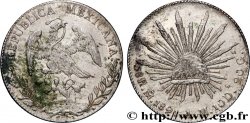
 Информация
Информация
